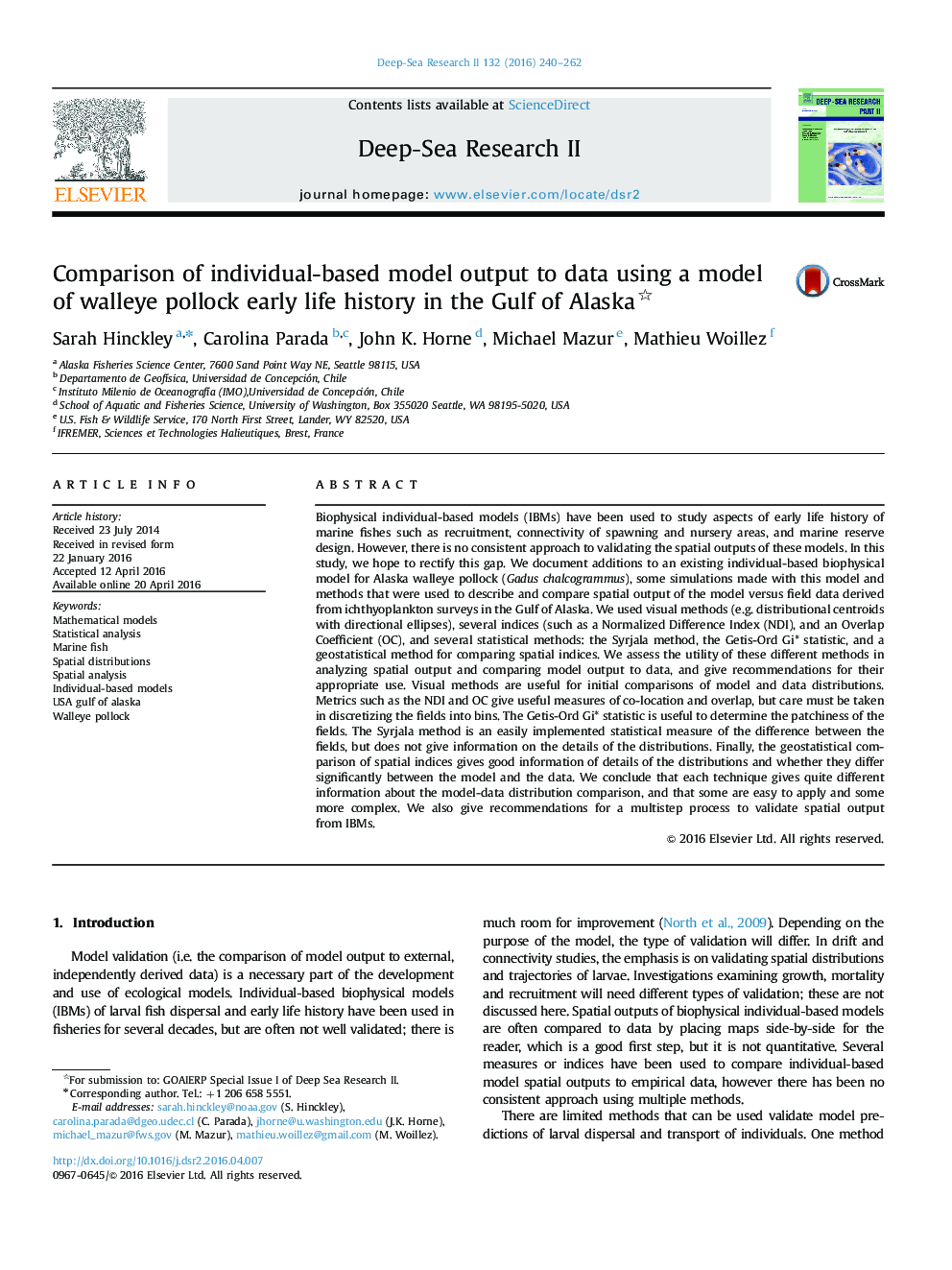| Article ID | Journal | Published Year | Pages | File Type |
|---|---|---|---|---|
| 4536091 | Deep Sea Research Part II: Topical Studies in Oceanography | 2016 | 23 Pages |
Biophysical individual-based models (IBMs) have been used to study aspects of early life history of marine fishes such as recruitment, connectivity of spawning and nursery areas, and marine reserve design. However, there is no consistent approach to validating the spatial outputs of these models. In this study, we hope to rectify this gap. We document additions to an existing individual-based biophysical model for Alaska walleye pollock (Gadus chalcogrammus), some simulations made with this model and methods that were used to describe and compare spatial output of the model versus field data derived from ichthyoplankton surveys in the Gulf of Alaska. We used visual methods (e.g. distributional centroids with directional ellipses), several indices (such as a Normalized Difference Index (NDI), and an Overlap Coefficient (OC), and several statistical methods: the Syrjala method, the Getis-Ord Gi* statistic, and a geostatistical method for comparing spatial indices. We assess the utility of these different methods in analyzing spatial output and comparing model output to data, and give recommendations for their appropriate use. Visual methods are useful for initial comparisons of model and data distributions. Metrics such as the NDI and OC give useful measures of co-location and overlap, but care must be taken in discretizing the fields into bins. The Getis-Ord Gi* statistic is useful to determine the patchiness of the fields. The Syrjala method is an easily implemented statistical measure of the difference between the fields, but does not give information on the details of the distributions. Finally, the geostatistical comparison of spatial indices gives good information of details of the distributions and whether they differ significantly between the model and the data. We conclude that each technique gives quite different information about the model-data distribution comparison, and that some are easy to apply and some more complex. We also give recommendations for a multistep process to validate spatial output from IBMs.
